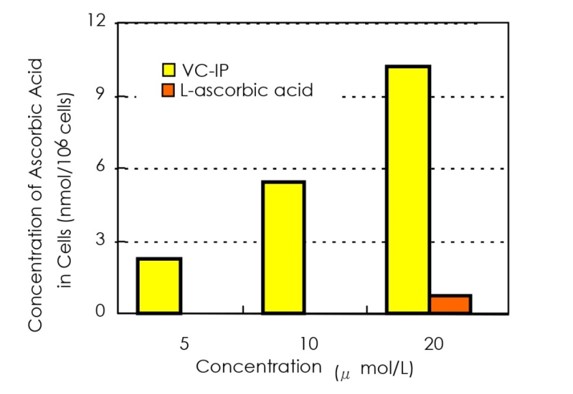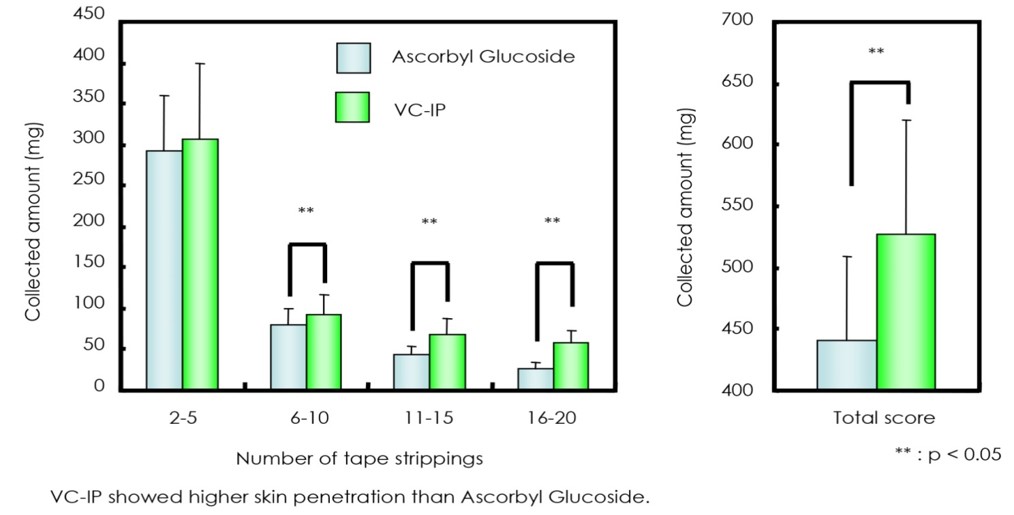VITAMIN C VC-IP
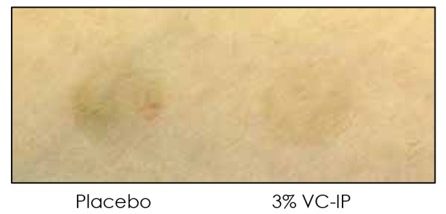

Proven Active Ingredients: Oil-Soluble Vitamin C Derivative – VC-IP “Super C”
INCI Name : Ascorbyl Tetraisopalmitate
NIKKO CHEMICALS CO., LTD.( www.nikkol.co.jp)
Inhibition of Melanogenesis – Anti Pigmentation
Various concentrations of VC-IP were added to cultured human melanoma cells (HM-3-KO). After 4 days of cultivation, the amount of melanin produced was measured by observation of the color tone of each cell pellet. As shown below, VC-IP effectively inhibited melanogenesis in human melanoma cells. Results were dose-dependent.
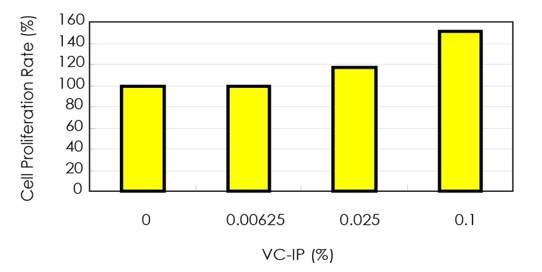
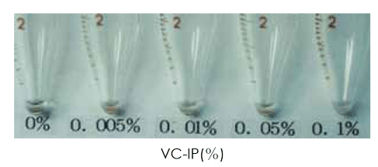
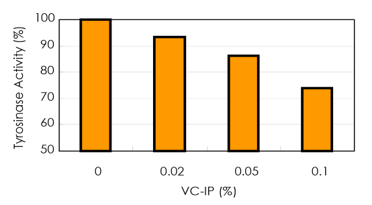
Inhibition of Intracellular Tyrosinase Activity
Clinical In-Vivo Study on VC-IP (3%)
Number of volunteers: 30
Testing site: Inner side of volunteer’s upper arm
Testing period: 3 weeks
Procedure: For the first step of the test, minimal erythema dose (MED) of each volunteer is measured using solar simulator. Briefly, 6 dosed of UV ray are irradiated to the inner side of right upper arm. After 24 hours from irradiation, MED is judged. For the second step, 1.5 MED of UV ray is irradiated on the inner side of left upper arm of each volunteer in order to make pigmentation.
Sample application is started just after irradiation. Sample is applied twice a day during test period. Sample application sites are randomly changed in every volunteer in order to maintain integrity.


Cell Revitalizing Activity / Cell Proliferation

Promotion of Collagen Synthesis

Inhibited activity of Collagen degrading enzymes
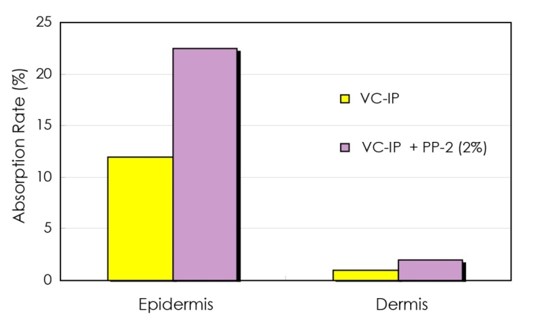
Percutaneous Absorption of VC-IP
Efficient Absorption into Human Dermal Fibroblasts
